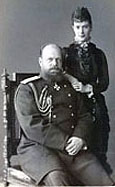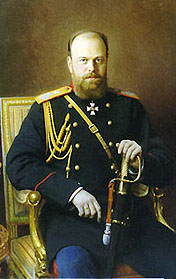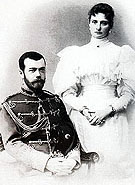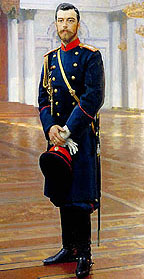 What you must do this
unit
What you must do this
unit
What you can do this
unit
- Read Petr Stolypin's "We Need a Great Russia" speech to the Russian Duma in 1907. This was an important policy proclamation in which he set forth his plan for revamping the Russian countryside. Log into Blackboard and look for the speech under course documents.
- Read a contemporary explanation of
Russia's lack of any substantial industry
- Read chapter 25 and chapter 26 from Mary Platt Parmele (1843-1911) A Short History of Russia
(1907, 4th edition). These are short chapters, and this is optional reading.
- In H. W. Williams, Russia of the Russians (New York: Charles Scribner's Sons, 1915),
consider reading any of these chapters: The Bureaucracy and the Constitution,
The Press,
Church and People,
Peasants and Proprietors,
Trade and Industry and
In the Chief City [St. Petersburg]. Williams
was a newspaper correspondent in Russia who married a
politically-active Russian liberal woman. His book, though almost a
century old, is well-written and very much reflective of pre-World War
I sentiments. He made some very interesting observations about Russia in his book.
Some videos that you can watch for this unit
Extra Credit Options
- For 50 points maximum extra credit, take a look at the 1897 map of St. Petersburg. In a one-page paper, exlain what you can discover about St. Petersburg at the time from looking at and analyzing this old map.
- For 50 points maximum extra credit, watch Dersu Uzala (1975). What
does the movie tell us about earlier Russian society, in a one-page paper?
- For 50 points maximum extra credit, watch Fiddler on the Roof (1971) and explain in a one-page paper how Jews did /did not get along with Russians at the turn of the century?
- For 50 points maximum extra credit, read
Edward Judge, Easter in Kishinev: Anatomy of a Pogrom (1992) and
write a one-page paper, "What were the government's motives in instigating the pogroms?".
- For 50 points maximum extra credit, read
Theodore H. von Laue, Sergei Witte and the Industrialization of Russia (1963) and
write a one-page paper explaining the "Witte system" of economic modernization.
- For 50 points maximum extra credit, read
Robert Massie, Nicholas and Alexandra (1967) and
write a one-page paper explaining what went wrong in Russia under tsar Nicholas II.
- For 25 points maximum extra credit, read
the Letter of the Revolutionary Committee to Alexander III,
written after the
assassination of Alexander II, and write a long paragraph that answers the
question, Do you think that this was a wise move, sending this letter, on
the part of the Russian revolutionaries? (Check the tsar's
Manifesto of April 29, 1881, a *.pdf file).
- For 25 points maximum extra credit, read some excerpts from
Konstantin Pobedonostsev, Reflections of a Russian Statesman (*.pdf), and
write a long paragraph that answers the question, What were some of the main tenets of
Pobedonostsev's political philosophy?
- For 25 points maximum extra credit, read a
newspaper account of
the Kishinev pogrom and write a paragraph explaining the impact of the pogrom
on Kishinev.
- For 25 points maximum extra credit, read the
Franco-Russian Alliance Military Convention (1892),
and write a long paragraph that answers the question, How did this convention fit into the
pre-1914 diplomatic scene?
|



